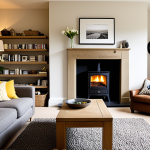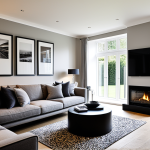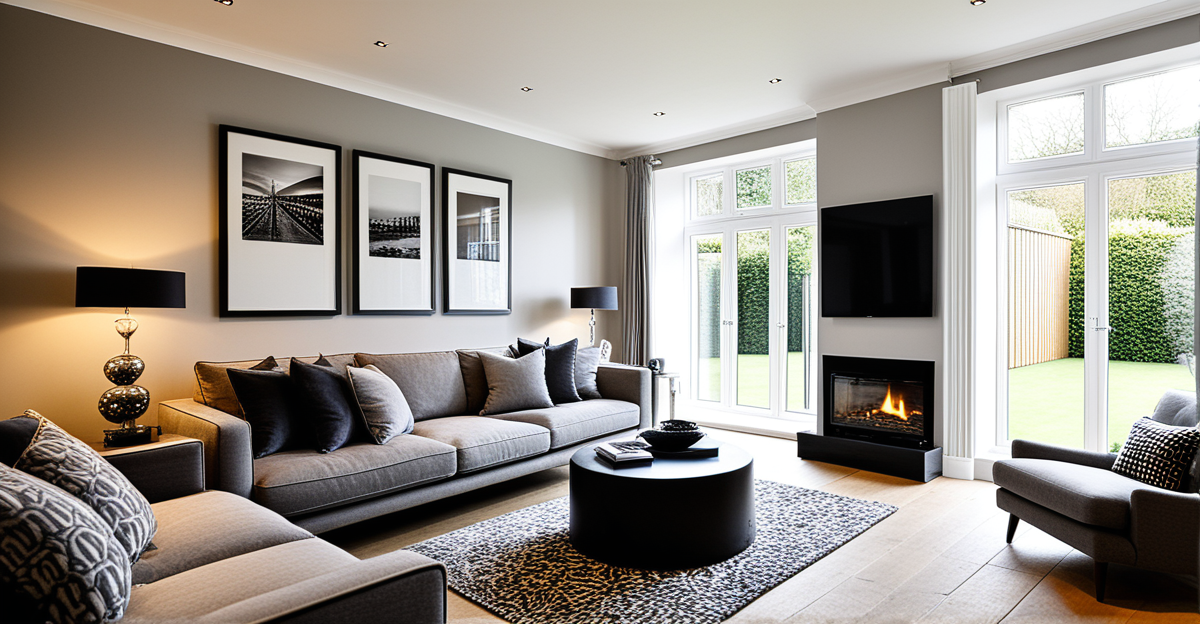Essential Interior Design Principles for UK Homes
Incorporating interior design principles tailored to UK homes requires a clear understanding of the unique challenges and opportunities presented by British properties. UK home decorating advice emphasizes foundations that balance style with practicality, particularly given common constraints such as smaller room sizes and fluctuating natural light.
One of the core interior design tips UK experts recommend is focusing on adaptability. Many UK homes feature period architecture or compact layouts, so designs must cleverly integrate function without sacrificing aesthetic appeal. For example, layering lighting solutions — combining ambient, task, and accent lighting — helps counterbalance the often limited daylight, enhancing both mood and usability.
This might interest you : How can you choose the right furniture for compact UK apartments?
Practicality reigns supreme in UK spaces where space is at a premium. Prioritising practical solutions for limited space and natural light includes modular furniture and smart storage. Such elements optimize room flow and prevent clutter, a frequent obstacle in UK home decorating. Mirrors positioned strategically can amplify light and create the illusion of space, aligning with essential British design principles that value openness yet preserve warmth.
Ultimately, these key pillars — adapting to architectural styles, maximizing natural light, and introducing space-conscious alternatives — form the backbone of effective and enduring interior design within the UK housing context. Embracing these interior design tips UK homeowners gain a blueprint for stylish yet enduring interiors.
This might interest you : What Are the Top Tips for Designing a Family-Friendly UK Living Room?
Maximising Natural Light and Space in British Residences
Maximising light in UK homes is essential due to the often overcast climate and smaller room sizes prevalent in British properties. Effective interior design tips UK experts endorse focus on strategies that harness and amplify natural daylight, creating brighter, more inviting interiors. One key approach involves positioning light-coloured walls and reflective surfaces, such as mirrors or glossy finishes, opposite windows to bounce sunlight deeper into rooms. Using sheer window treatments further increases light penetration while maintaining privacy.
Space-saving design is another crucial element when addressing typical UK home constraints. Compact rooms benefit from layouts that prioritise flow and avoid overcrowding. Modular furniture with built-in storage allows flexibility and solves clutter issues without compromising style. For example, ottomans that double as storage boxes or extendable dining tables adapt to shifting needs, aligning well with small UK home tips to enhance usability.
Choosing furnishings and décor that create a sense of spaciousness also plays a vital role. Opting for multi-functional pieces that blend seamlessly with the décor helps prevent visual clutter. Light fabrics, raised furniture legs, and the careful arrangement of items to preserve open sightlines contribute to an airy atmosphere. These combined techniques form the backbone of maximising light UK homes need while ensuring space-saving design meets practical demands in compact British interiors.
Essential Interior Design Principles for UK Homes
UK homes often demand a unique approach, blending tradition with practical solutions to maximise limited space and light. Embracing interior design principles specifically tailored for these properties ensures both style and functionality. One foundational aspect is respecting the architectural context, whether Victorian terraces or modern flats, by choosing designs that complement but do not overwhelm.
Adapting classic design principles involves balancing scale, texture, and colour to suit smaller UK rooms. For instance, layering materials like soft textiles against smooth surfaces creates depth without clutter. Similarly, careful colour selection—leaning towards light neutrals punctuated by accents—helps open up spaces without sacrificing warmth. These choices stem from time-tested UK home decorating advice that prioritises comfort and visual appeal within compact footprints.
Practicality remains paramount. Effective interior design tips UK experts highlight include multi-functional furniture and flexible layouts to suit changing needs. Such solutions fit naturally into smaller homes, helping residents maximise every square metre. Additionally, integrating clever storage—using under-stair voids, built-in shelving, or hidden compartments—maintains order and supports a calm living environment.
Finally, incorporating these core principles fosters interiors that endure stylistic trends while addressing the realities of British living. This approach equips homeowners with a design blueprint that balances beauty, practicality, and respect for the unique characteristics found in UK homes.
Essential Interior Design Principles for UK Homes
UK homes often present a unique blend of traditional architecture and spatial constraints, making interior design tips UK crucial for balancing style and practicality. At the heart of effective interior design principles for British properties is a deep respect for the architectural heritage — whether preparing period features or complementing modern builds. This sensitivity ensures that new interiors enhance, rather than overwhelm, the character of the home.
Adapting classic interior design principles to the realities of UK housing involves focusing heavily on scale and texture. For example, layering soft fabrics with hard surfaces helps add depth without overcrowding a room. Colour palettes typically emphasize light, neutral shades with thoughtful accent colours to counteract smaller room sizes and limited natural light, a frequent challenge in UK homes. These choices are guided by expert UK home decorating advice that values warmth and openness in compact spaces.
Perhaps most importantly, prioritizing practical solutions is essential. UK homes benefit immensely from flexible furniture and clever storage that respond to changing lifestyle needs. Multi-functional pieces such as fold-away desks or beds with storage compartment reflect insightful interior design tips UK experts recommend for making the most of every inch. Additionally, incorporating built-in shelving or utilising underused corners can transform a cramped space into an organised, calm environment. These strategies form the cornerstone of sustainable interior design principles that cater specifically to the UK market, blending timeless aesthetics with daily usability.
Essential Interior Design Principles for UK Homes
UK homes present distinctive challenges that make interior design principles especially crucial. A core foundation involves tailoring designs to suit both the architectural heritage and practical limitations common in British properties. For example, Victorian terraces and contemporary flats each require nuanced approaches that respect character while addressing space restrictions.
Adapting classic interior design principles means focusing on proportion, texture, and colour in ways that enhance smaller rooms without overwhelming them. Selecting light, neutral palettes combined with tactile materials adds depth and warmth. Achieving balance is key: large, heavy furnishings can crowd compact areas, so scale must always align with room dimensions.
Prioritising practical solutions for limited space and natural light remains essential in effective UK home decorating advice. Multi-functional furniture—such as extendable tables or beds with storage—maximises usability, while clever storage integrations keep clutter down and maintain visual calm. Strategic layering of lighting compensates for often muted daylight conditions, boosting ambience and functionality.
Together, these tested interior design tips UK experts recommend offer a clear blueprint: designs that honour tradition, enhance spatial flow, and remain adaptable to everyday British living needs.
Essential Interior Design Principles for UK Homes
Designed specifically for British properties, effective interior design principles combine respect for traditional architecture with smart adaptations for everyday living. Key to success is understanding the unique needs of UK homes—often characterised by compact spaces and variable natural light. Following expert interior design tips UK emphasises scale, material, and colour to create balanced, functional interiors.
One fundamental element is adapting classic design principles to suit prevalent UK housing styles, such as Victorian terraces or modern apartments. This means selecting furnishings and décor that complement the period’s character while cleverly maximising usable space. For example, lighter colour palettes and textured fabrics enrich rooms without clutter, echoing widely accepted UK home decorating advice.
Practicality remains central. Solutions prioritising efficient use of limited space and enhancing light form the cornerstone of these interior design principles. Multi-purpose furniture, integrated storage, and layered lighting schemes feature prominently in the interior design tips UK recommended by professionals. These strategies ensure homes not only look inviting but also accommodate varied functional needs without compromising aesthetics.







